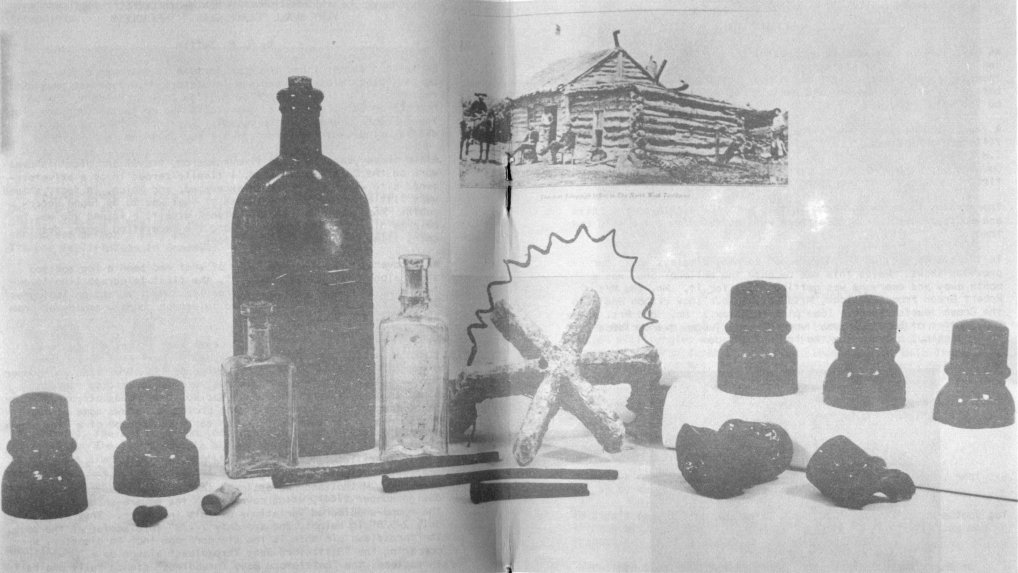Information On A Newly-Discovered Very Small Black Glass Threadless
by R. M Settle
Reprinted from "INSULATORS - Crown Jewels of the Wire", September 1972, page 25
Early this summer I had the good fortune to discover a few unembossed "Black
Glass" threadless insulators of a type not previously, reported. I'd like to describe
my find to your readers, in the hope of encouraging them to leave climbing to the
linemen, hang up their "hooks", and "hit the books". Research indicates where to
dig, and the best insulators of all may be found in the ground.
After three years of spare time research, travel and pick'n'shovel work on the
Canadian prairies, I finally zeroed in on a privately-owned site which had not been
excavated, and which, in fact, showed very little surface indication as to what
was to be found underneath. Negotiations followed between myself, a friend who
was to help me dig, and the landowner, and the excavation began, despite rain,
flies, and swarms of mosquitoes.
We uncovered the sub-grade floor of what had been a log and sod shack along
the "Battleford Line", the first telegraph line to extend west of Winnipeg into the
frontier. My information indicates that this shack was "home" to two telegraph
company employees from about 1875 to 1886.
At a depth of five to six feet beneath what is now an open wheat field I recovered
a few insulators, a "Warner's Safe Cure" and other medicine bottles, a large
number of tin cans, zinc and copper "crowsfeet" from wet-cell batteries, a piece
of a clay tobacco pipe, square nails, rifle shells and several pounds of
broken insulator fragments. The accompanying photograph shows some of these items, and
in the background is an early photograph of a line shack of the type I excavated.
I call these insulators "Battleford Baby Threadless", as they are smaller and lighter
in design than any other insulators I have ever seen. Mr. Milholland has assigned
them an exclusive consolidated design number (744), which covers both the
square-shouldered and the round-shouldered variations of this insulator. They
average only 2-5/8" in height, and are only 2-1/8" in diameter at the base. The
threadless pin hole is the standard one inch in diameter. When comparing the
"Battleford Baby Threadless" alongside a "McMicking" threadless, the "Battleford
Baby Threadless" stands fully one half inch shorter, and is thinner and lighter
throughout.
It's interesting to speculate as to why these insulators were made so small and of
such light construction. My research indicates that all the line materials were first
stockpiled at Winnipeg in the early 1860's so the date of manufacture may be well
before 1865. It's my guess that reduction in weight was a prime consideration
when the line materials were ordered, and the insulators were specifically
designed to meet weight restrictions, with little consideration to durability. It must
have been irritating to the linemen of that era to have to use insulators which were
so easily
broken, and which refused to stay on their pins, but I guess Mr.
Cauvet's idea of threaded insulators took a while to catch on in
some of the less accessible regions of this continent.

|
